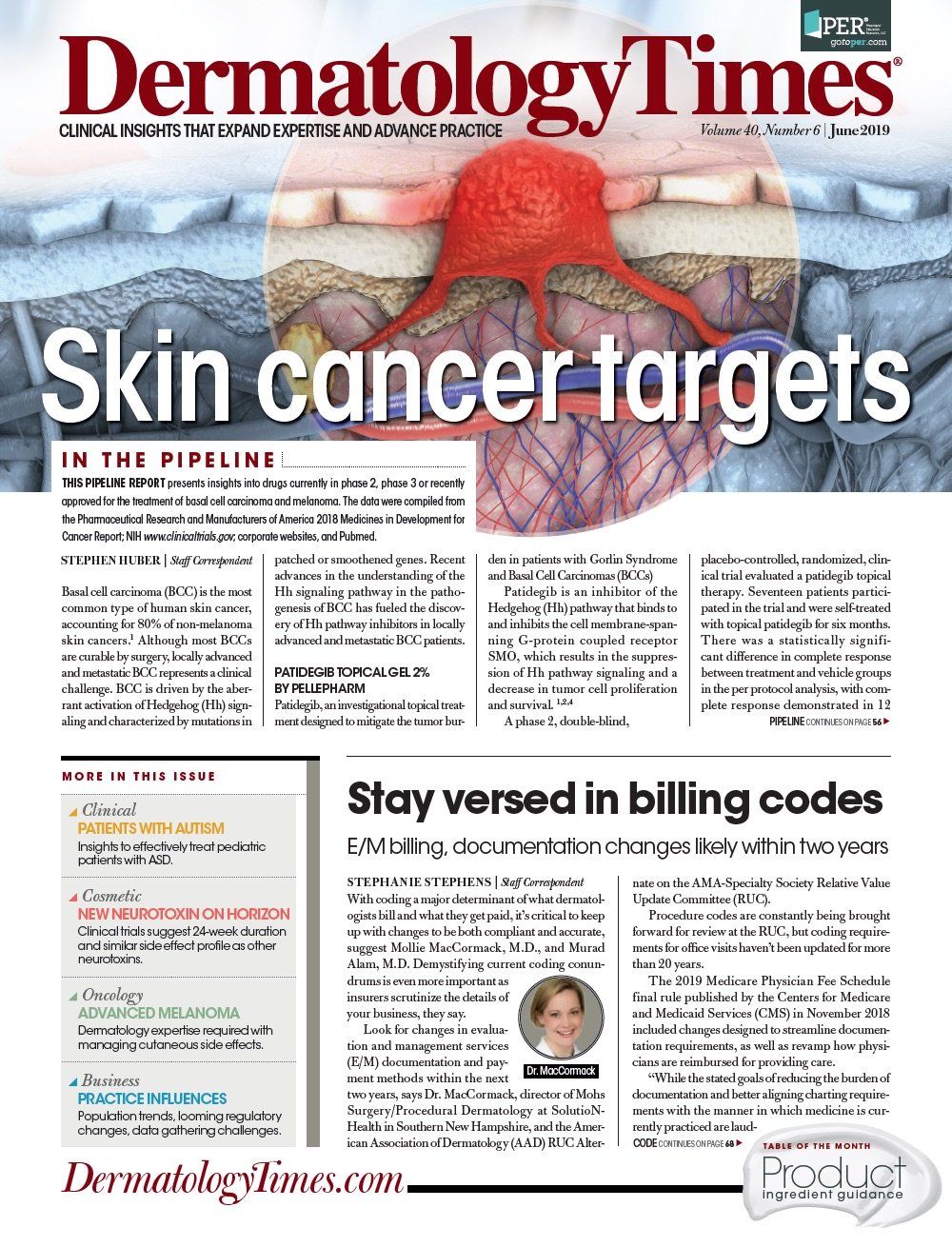- Case-Based Roundtable
- General Dermatology
- Eczema
- Chronic Hand Eczema
- Alopecia
- Aesthetics
- Vitiligo
- COVID-19
- Actinic Keratosis
- Precision Medicine and Biologics
- Rare Disease
- Wound Care
- Rosacea
- Psoriasis
- Psoriatic Arthritis
- Atopic Dermatitis
- Melasma
- NP and PA
- Skin Cancer
- Hidradenitis Suppurativa
- Drug Watch
- Pigmentary Disorders
- Acne
- Pediatric Dermatology
- Practice Management
- Prurigo Nodularis
- Buy-and-Bill
Publication
Article
Dermatology Times
OTC options can provide prescription alternatives
Author(s):
Dermatology has more over-the-counter (OTC) drug formulations than many areas of medicine, most of which are covered under drug monographs. Zoe Diana Draelos, M.D., discusses the drug monographs used in dermatology in this article.
The drug monographs are very important to dermatology, as the development of safe, effective nonprescription products is fast and relatively inexpensive. (©DmitriMa/Shutterstock.com)

Dr. Draelos

Dermatology has more over-the-counter (OTC) drug formulations than many areas of medicine, most of which are covered under drug monographs. The drug monographs are very important to dermatology, as the development of safe, effective nonprescription products is fast and relatively inexpensive. These formulations use Category I ingredients that are Generally Recognized As Safe and Effective (GRASE) for the claimed therapeutic indication. GRASE products are becoming more important as the price of prescription topical agents exponentially increases. I believe the monograph system is currently a relatively under-utilized but highly effective pathway to bring minimal-risk products to market.
There are a number of monographs pertaining specifically to skin disease that are worth investigating, as this is an area unfamiliar to most practicing dermatologists. The monographs contain a list of approved ingredients, the concentration in which they can be used, and if they can be combined with other monographed ingredients. These monographs are briefly discussed below:
1. ACNE: This monograph contains 40 ingredients that can be used for acne treatment, but the rule was finalized in 1990 with a benzoyl peroxide action in 2010.
2. ANTI-FUNGAL: This monograph has ingredients that can be used in the diaper area and on feet and was originally passed in 1993.
3. ANTIPERSPIRANTS: This monograph has 26 active ingredients and was issued in 2003.
4. ASTRINGENTS: These ingredients are classified as skin protectants and the monograph was issued in 2003.
5. DANDRUFF: These are the ingredients that can be used in dandruff shampoos and the final monograph was issued in 1991 and revised in 1992.
6. HAIR GROWTH/HAIR LOSS: The original monograph was issued in 1989 containing only ineffective ingredients. The monograph was updated in 1994 with topical minoxidil.
7. PSORIASIS: These are the ingredients designed to treat psoriasis with the tentative monograph issued in 1986 and it has yet to be finalized. The only ingredients on the monograph are coal tar and salicylic acid.
8. SKIN BLEACHING: There are only two ingredients on this monograph that was issued in 1982, but has yet to be finalized.
9. SUNSCREEN: Lists ingredients, concentrations, and combinations that can be used in sunscreens and the final monograph was issued in 2011.
10. WART REMOVER: Lists products used to remove warts with the final monograph issued in 1990 and updated in 1994 has 13 ingredients.
After examining this list, there are several important observations that can be made.
First, the monographs deal with a significant number of the most frequent diseases dermatologists treat. This means dermatologists should familiarize themselves with the monographed ingredients and learn how to use OTC drugs effectively for patients who cannot afford higher priced prescription medications. The OTC drugs may not work as quickly or as well as prescription products, but may be a temporary treatment solution or effective for maintenance or early relapse.
Second, the monographs are sorely out of date. The FDA needs to regularly review the monographs and allow pharmaceutical companies to present additions. This would expand the number of OTC offerings and increase efficacy.
Third, consumers have many more readily available educational resources that can guide better use of OTC medications.
Fourth, sometimes the use of OTC drugs can prevent more severe disease, such as the use of sunscreens.
I believe it is time to update and expand the drug monograph system in the United States. This method of regulating OTC drugs has proven to be highly effective and could assist in decreasing the cost of healthcare in the United States. Further, dermatologists should understand the OTC options and utilize these medications when necessary







